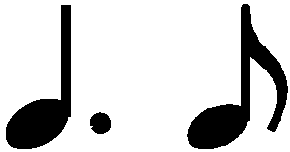



Rhythm
|
b. 51
|
composition: Op. 27 No 1, Nocturne in C# minor
..
In GE (→FE) notes of the R.H. rhythm category imprint: Interpretations within context; Differences between sources issues: EE revisions , GE revisions , Dotted rhythms and triplets |
|||||||||||
|
b. 53-62
|
composition: Op. 27 No 1, Nocturne in C# minor
..
In GE (→FE) in bars 53-62, similarly to GE in bars 29-36, notes of the R.H. rhythm category imprint: Interpretations within context; Differences between sources |
|||||||||||
|
b. 83
|
composition: Op. 27 No 1, Nocturne in C# minor
..
The irregular notation of GE is nevertheless clear and most probably authentic which is why we give it in the main text. We also regard Chopin's intervention during the proofreading of FE as a very unlikely explanation of the lack of bar line in FE (→EE). category imprint: Differences between sources issues: FE revisions |
|||||||||||
|
b. 83
|
composition: Op. 27 No 1, Nocturne in C# minor
..
The rhythm notation in GE, in which the rhythmic values of both marked voices of the R.H. add up to a dotted minim written in the L.H., is formally correct and makes musical and pianistic sense. There is no reason to doubt its compliance with [A]. Adding in FE (→EE1→EE2) of the dots extending the octave a1-a2 is most probably the engraver's fault, as he failed to grasp that the minim d sharp 2 was supposed to sound on the 3rd beat of the bar together with g sharp1-f sharp2-g sharp2. The version of EE3, clearly erroneous, could have originated as a result of an unfinished attempt to restore the version of GE. category imprint: Differences between sources issues: EE revisions , FE revisions |
|||||||||||
|
b. 88
|
composition: Op. 27 No 1, Nocturne in C# minor
..
In bar 88 in GE (→FE→EE) the semiquaver in See bars 5-13. category imprint: Interpretations within context issues: GE revisions , Dotted rhythms and triplets |



 are distributed in such a way that the quaver is aligned with the 6th L.H. note. In the editors' opinion, this probably does not reflect Chopin's intention but we cannot state it definitely without [A]. The rhythmical structure of the bar, different e.g. from that in bars 29-36 & 53-62, as well as the local climax ending in this bar make a possible exception slightly more likely here. In the main text, we apply the regular rhythmic notation, so did
are distributed in such a way that the quaver is aligned with the 6th L.H. note. In the editors' opinion, this probably does not reflect Chopin's intention but we cannot state it definitely without [A]. The rhythmical structure of the bar, different e.g. from that in bars 29-36 & 53-62, as well as the local climax ending in this bar make a possible exception slightly more likely here. In the main text, we apply the regular rhythmic notation, so did 









 was moved beyond the 3rd note of the triplet in the accompaniment. This inauthentic, misleading notation was used throughout the Nocturne.
was moved beyond the 3rd note of the triplet in the accompaniment. This inauthentic, misleading notation was used throughout the Nocturne.